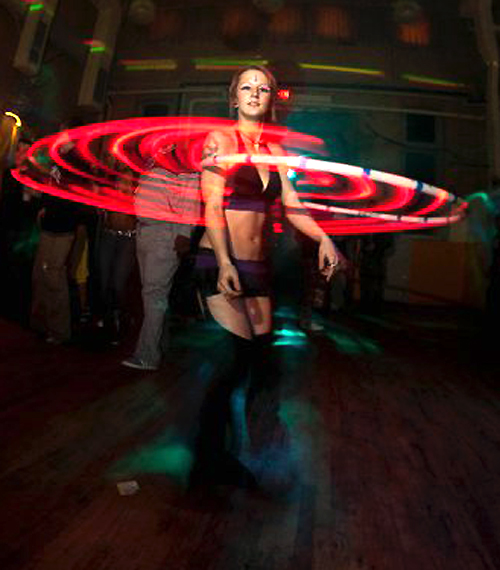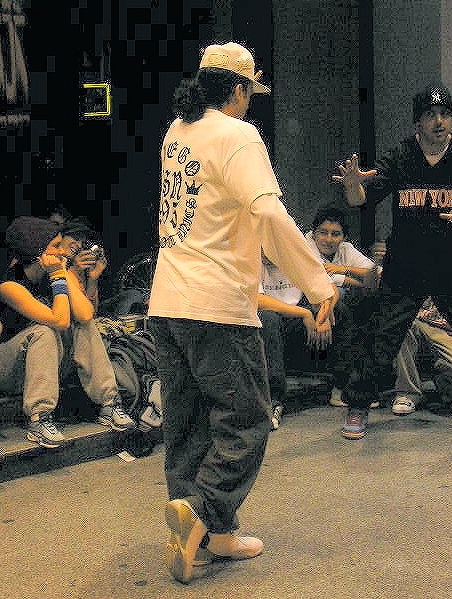|
Isolation (illusion)
In contact juggling, poi spinning, hooping and other types of object manipulation, an isolation is an illusion whereby a prop appears to float in space, with the performer's hands and body moving around it. In reality the performer is supporting the prop, and countering his or her movement relative to the prop. Michael Moschen is originally credited for developing several of the techniques for ball isolations (as well as hoops and other props) and since his original performance of 'Light' in the late 1980s, the idea has developed into a wide variety of techniques. One of the most important developments was the combination of crystal ball isolations and body-popping/locking (dance), locking/waving dance styles, as seen in the styles of, amongst others, Nik Robson and Matt Hennem in the '90s. Contact juggling Juggling patterns and tricks {{Juggling-stub ... [...More Info...] [...Related Items...] OR: [Wikipedia] [Google] [Baidu] |
Contact Juggling
Contact juggling is a form of object manipulation that focuses on the movement of objects such as balls in contact with the body. Although often used in conjunction with "toss juggling", it differs in that it involves the rolling of one or more objects without releasing them into the air. History Many of the techniques found in contact juggling, such as balancing or rolling a single ball or palm spinning (see " Baoding Balls"), have been performed for centuries. More variations were introduced by vaudevillians such as Paul Cinquevalli. In 1986, American juggler Tony Duncan was reported to be holding audiences spellbound with an act that involved rolling a single ball all over his body. Michael Moschen brought the form to a new level with his performance, "Light", developed in the 1980s. In this performance he used 75mm clear crystal balls, palm spinning up to eight balls simultaneously. He finished the act by rolling a single clear ball so that it appeared to float over his ha ... [...More Info...] [...Related Items...] OR: [Wikipedia] [Google] [Baidu] |
Poi Spinning
Poi is a performing art and also the name of the equipment used for its performance. As a skill toy, poi is an object or theatrical prop used for dexterity play or an object manipulation. As a performance art, poi involves swinging tethered weights through a variety of rhythmical and geometric patterns. Poi artists may also sing or dance while swinging their poi. Poi can be made from various materials with different handles, weights, and effects (such as fire). Poi originated with the Māori people of New Zealand, where it is still practised today. Poi has also gained a following in many other countries. The expansion of poi culture has led to a significant evolution of the styles practised, the tools used, and the definition of the word "poi." Māori culture In the Māori language, ''poi'' can mean the physical objects used by the dancers, the choreography itself, or the accompanying music. In Māori culture, poi performance is usually practised by women. Some legends ind ... [...More Info...] [...Related Items...] OR: [Wikipedia] [Google] [Baidu] |
Hooping
Hooping (also called hula hooping or hoop dance) is the manipulation of and artistic movement or dancing with a hoop (or hoops). Hoops can be made of metal, wood, or plastic. Hooping combines technical moves and tricks with freestyle or technical dancing. Hooping can be practiced to or performed with music. In contrast to the classic toy hula hoop, modern hoopers use heavier and larger diameter hoops, and frequently rotate the hoop around parts of the body other than the waist, including the hips, chest, neck, shoulders, thighs, knees, arms, hands, thumbs, feet, and toes. The hoop can also be manipulated and rotated off the body as well. Modern hooping has been influenced by art forms such as rhythmic gymnastics, hip-hop, freestyle dance, fire performance, twirling, poi, and other dance and movement forms. Hooping is a physical dexterity activity that has been described as a part of flow arts, and a form of object manipulation. It is sometimes described as a form of juggling. I ... [...More Info...] [...Related Items...] OR: [Wikipedia] [Google] [Baidu] |
Object Manipulation
Object manipulation is a form of dexterity play or performance in which one or more people physically interact with one or more objects. Many object manipulation skills are recognised circus skills. Other object manipulation skills are linked to sport, magic, and everyday objects or practices. Many object manipulation skills use special props made for that purpose: examples include the varied circus props such as balls, clubs, hoops, rings, poi, staff, and devil sticks; magic props such as cards and coins; sports equipment such as nunchaku and footballs. Many other objects can also be used for manipulation skills. Object manipulation with ordinary items may be considered to be object manipulation when the object is used in an unusually stylised or skilful way (such as in flair bartending) or for a physical interaction outside of its socially acknowledged context or differently from its original purpose. Object manipulators may also be practitioners of fire performance, which is ... [...More Info...] [...Related Items...] OR: [Wikipedia] [Google] [Baidu] |
Illusion
An illusion is a distortion of the senses, which can reveal how the mind normally organizes and interprets sensory stimulation. Although illusions distort the human perception of reality, they are generally shared by most people. Illusions may occur with any of the human senses, but visual illusions ( optical illusions) are the best-known and understood. The emphasis on visual illusions occurs because vision often dominates the other senses. For example, individuals watching a ventriloquist will perceive the voice is coming from the dummy since they are able to see the dummy mouth the words. Some illusions are based on general assumptions the brain makes during perception. These assumptions are made using organizational principles (e.g., Gestalt theory), an individual's capacity for depth perception and motion perception, and perceptual constancy. Other illusions occur because of biological sensory structures within the human body or conditions outside the body within one's phy ... [...More Info...] [...Related Items...] OR: [Wikipedia] [Google] [Baidu] |
Michael Moschen
Michael Moschen (born 1955 in Greenfield, Massachusetts) is an American juggler. He received a Fellowship from the MacArthur Foundation (the Genius Grant) in 1990, has appeared on TV on PBS, and did ads for Motorola. Cirque du Soleil commissioned Moschen to create a new work for their permanent theatrical circus in Las Vegas, Nevada. Moschen is particularly known for contact juggling. In the 1986 film ''Labyrinth'' the crystal ball manipulations seen to be performed by David Bowie's character were actually done by Moschen, who stood behind Bowie during filming. Since Moschen could not see the objects he was juggling, it took many takes to film the scenes with the crystal balls. Moschen was a classmate of Penn Jillette's at Greenfield High School, class of 1973. The two worked together developing juggling performances immediately after high school. In 1991, an episode of ''Great Performances'' entitled "In Motion with Michael Moschen" focused on his creative process and showed se ... [...More Info...] [...Related Items...] OR: [Wikipedia] [Google] [Baidu] |
Popping
Popping is a street dance adapted out of the earlier Boogaloo (funk dance) cultural movement in Oakland, California. As Boogaloo spread, it would be referred to as Robottin in Richmond, California, Strutting movements in San Francisco and San Jose, and the Strikin dances of the Oak Park community of Sacramento which were popular through the mid-1960s to the 1970s.Guzman-Sanchez, T. (2012) Underground Dance Masters: Final History of a Forgotten Era. Praeger. Popping would be eventually adapted from earlier Boogaloo (freestyle dance) movements in Fresno, California, in the late 1970s by way of California high-school gatherings of track & meet events - the West Coast Relays. The dance is rooted through the rhythms of live funk music, and is based on the technique of Boogaloo's posing approach, quickly contracting and relaxing muscles to cause a jerk or can be a sudden stop in the dancer's body, referred to as a ''pose'', ''pop'' or a ''hit''.Guzman-Sanchez, T. (2012) "The Oakland ... [...More Info...] [...Related Items...] OR: [Wikipedia] [Google] [Baidu] |
Locking (dance)
Locking is a style of funk dance, which is today also associated with hip hop. The name is based on the concept of ''locking'' movements, which means freezing from a fast movement and "locking" in a certain position, holding that position for a short while and then continuing at the same speed as before. It relies on fast and distinct arm and hand movements combined with more relaxed hips and legs. The movements are generally large and exaggerated, and often very rhythmic and tightly synced with the music. Locking is performance oriented, often interacting with the audience by smiling or giving them a high five, and some moves are quite comical. Locking was originally danced to traditional funk music, such as that produced or performed by James Brown. Funk music is still commonly favored by locking dancers and used by many competitions such as the locking divisions of Juste Debout and Summer Dance Forever. Locking movements create a strong contrast towards the many fast moves th ... [...More Info...] [...Related Items...] OR: [Wikipedia] [Google] [Baidu] |
Matt Hennem
{{disambig ...
Matt may refer to: *Matt (name), people with the given name ''Matt'' or Matthew, meaning "gift from God", or the surname Matt *In British English, of a surface: having a non-glossy finish, see gloss (material appearance) *Matt, Switzerland, a municipality *"Matt", the cartoon by Matthew Pritchett in the UK ''Telegraph'' newspapers See also * Maat (other) * MAT (other) * Mat (other) * Matte (other) * Matthew (name) * Mutt (other) A mutt is a mongrel (a dog of unknown ancestry). Mutt may also refer to: People * Mutt, a derogatory term for mixed-race people Nickname * Larry Black (sprinter) (1951-2006), American sprinter * Mutt Carey (1886–1948), New Orleans jazz trumpe ... [...More Info...] [...Related Items...] OR: [Wikipedia] [Google] [Baidu] |
Contact Juggling
Contact juggling is a form of object manipulation that focuses on the movement of objects such as balls in contact with the body. Although often used in conjunction with "toss juggling", it differs in that it involves the rolling of one or more objects without releasing them into the air. History Many of the techniques found in contact juggling, such as balancing or rolling a single ball or palm spinning (see " Baoding Balls"), have been performed for centuries. More variations were introduced by vaudevillians such as Paul Cinquevalli. In 1986, American juggler Tony Duncan was reported to be holding audiences spellbound with an act that involved rolling a single ball all over his body. Michael Moschen brought the form to a new level with his performance, "Light", developed in the 1980s. In this performance he used 75mm clear crystal balls, palm spinning up to eight balls simultaneously. He finished the act by rolling a single clear ball so that it appeared to float over his ha ... [...More Info...] [...Related Items...] OR: [Wikipedia] [Google] [Baidu] |




